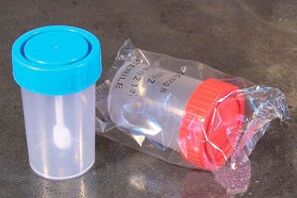
The parasite test in adults is a reliable method for detecting intestinal and other helminthic infections. Based on the results obtained during the research, the specialist prescribes appropriate treatment methods.
Do a parasite test regularly, not when symptoms indicate the presence of worms. Similar examinations are necessary for both children and adults.
Basic methods
Cal

The traditional way to detect worms in humans is to analyze feces. During the examination, specialists examine a fraction of the stool for the presence of parasite eggs. In order to achieve the most reliable results, at least 2-4 tests should be performed at intervals of several days.
It allows you to identify parasites such as:
- nematodes or roundworms;
- tapeworms (cestodes);
- trematodes (fluff).
This analysis of parasites, since it is quite simple, cannot claim the reliability of the results.
In order to obtain a reliable result, it is desirable to deliver the stool sample to the laboratory within 45 minutes after defecation. If this is not possible, you can store the container containing the sample in the refrigerator, but for no more than 8 hours.
Histology co-program
The next method for diagnosing worms in adults is histology coprogram. This study includes a microscopic analysis of the composition of the stool based on the study of the section. Such a procedure reveals the larvae of worms, fragments of their bodies, as well as the presence of mature adults.
The disadvantage of this technique is that it is unable to determine the specific type of parasite that develops in the human body.
Blood

The most effective tests are based on the patient's blood. This analysis determines the antibodies and antigens in the blood against certain types of parasitic organisms. It also provides information on the type, reproductive capacity and quantity of the intestinal worm.
Since the helminthic invasion is characterized by the release of toxic waste products of the parasites, the composition of the blood changes. This allows doctors to suspect the presence of worms.
A variant of this test is the enzyme immunoassay.
The sensitivity of this method is quite high (it reaches 90%). Even if other studies do not reveal the presence of worms, the enzyme-linked immunosorbent assay provides comprehensive data on the type and prevalence of worms.
The blood sample required for the test is taken from a vein on an empty stomach.
The blood sample will be tested within 2-5 days. The results obtained are interpreted by the attending physician.
The analysis allows monitoring the dynamics of the disease caused by helminthic invasion.
What parasitic diseases does this test detect? That:
- ascariasis;
- fasciolosis;
- amoebiasis;
- toxoplasmosis;
- giardiasis;
- opisthorchiasis;
- cutaneous and visceral leishmaniasis;
- cysticercosis.
You can perform parasite tests at various private clinics, whose specialists guarantee fast results.
When to take it
Sometimes helminthic invasion occurs without pronounced symptoms, which greatly complicates both the possibility of diagnosis and timely treatment. However, there are characteristic features, including:
- persistent headache;
- frequent colds;
- constipation;
- sleep disorder;
- fragility of nails;
- the appearance of cracks on the corners;
- intestinal disorder;
- itching in the anus.
Parasitic invasion is associated with serious complications. A large number of worms connected to the ball can cause intestinal obstruction. Other dangerous consequences include hypovitaminosis, beriberi, anemia, jaundice, chronic cell damage that provokes the development of cancer.






































